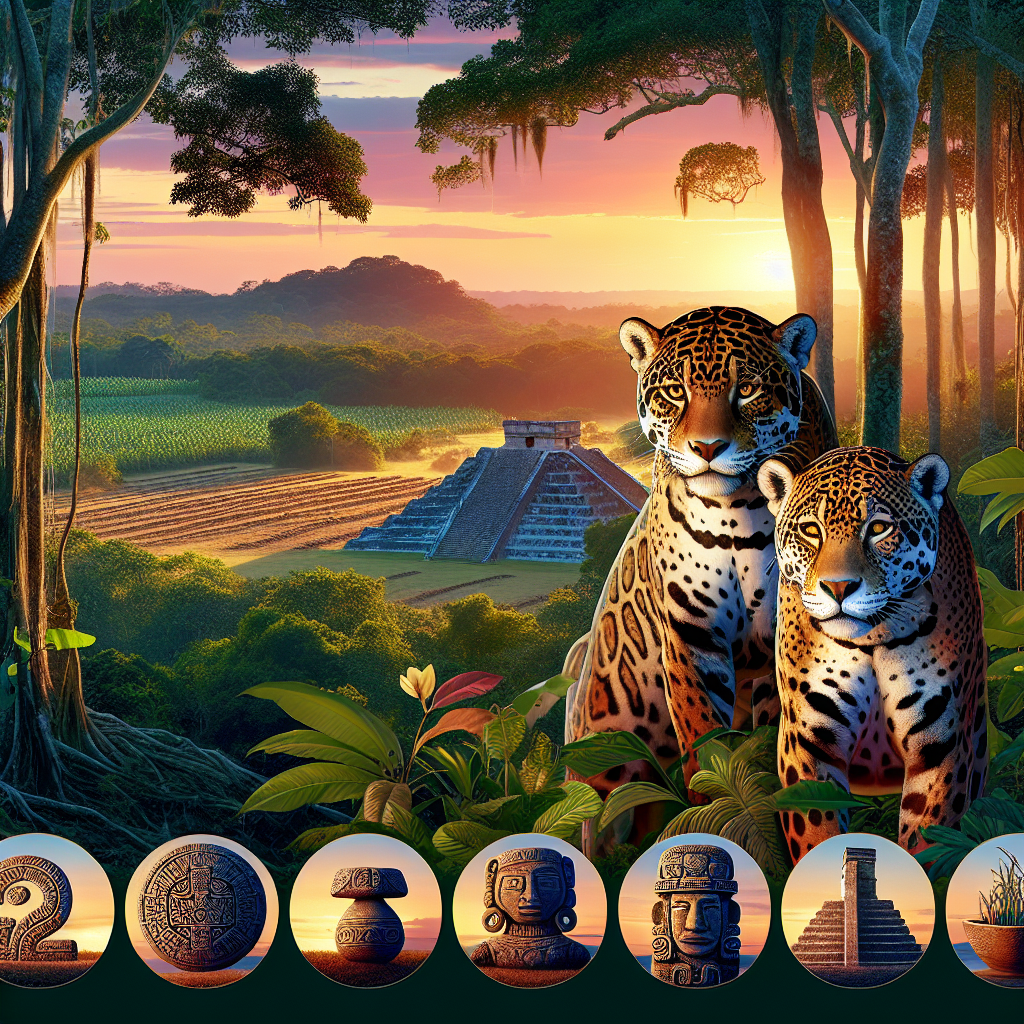Tulum’s Jaguars: Icons of Restoration and Community Engagement
The Majestic Jaguar: A Symbol of Power and Ecology
The jaguar (Panthera onca), often dubbed the “king of the jungle,” holds a revered status in Tulum, a coastal town on the Yucatán Peninsula of Mexico. Known for its striking beauty and solitary nature, this apex predator plays a crucial role in maintaining the equilibrium of its ecosystem. As Tulum has gained international attention for its tourism and stunning landscapes, the need to protect this majestic creature has become more pressing than ever.
Habitat of the Jaguar in Tulum
The natural habitat of the jaguar comprises varied landscapes that include tropical forests, wetlands, and riparian environments. Tulum’s surroundings, characterized by dense jungles and ancient cenotes, provide an ideal home for these remarkable cats. However, urbanization, deforestation, and habitat fragmentation have posed significant threats to their existence. Recent community efforts aimed at habitat restoration have proven essential in preserving these magnificent animals.
Conservation Initiatives and Collaboration
Numerous organizations and local communities have come together to address the challenges faced by Tulum’s jaguar population. Conservationists have established programs focusing on habitat restoration, community education, and anti-poaching measures. Collaborating with the Mexican government and international NGOs, these initiatives aim to create protected areas where jaguars can thrive without the pressures of human encroachment.
One prominent initiative is the “Jaguar Corridor” project, which intends to connect fragmented habitats across the Yucatán Peninsula, allowing for the free movement of jaguars and other wildlife. This interconnectedness is vital to the genetic diversity of the species, which is crucial for its survival. By facilitating wildlife corridors, communities are empowered, ensuring sustainable ecosystems while minimizing human-wildlife conflict.
Community Engagement and Education
Education is a cornerstone of Tulum’s conservation strategy. Local organizations are partnering with schools to implement programs that raise awareness about the importance of jaguars and biodiversity. Activities include workshops, guided visits to natural reserves, and the creation of educational materials that highlight the ecological significance of the jaguar.
Engaging the community has proven to be a game-changer in conservation efforts. By involving local residents in monitoring and protecting jaguar populations, a sense of ownership and pride emerges. The result is a growing commitment to preserving the unique biodiversity of Tulum, aligning community interests with conservation goals.
The Role of Ecotourism
Tulum has become a hotspot for ecotourism, which plays a dual role in both conservation and the local economy. Safaris and wildlife observation tours showcase the region’s rich biodiversity while generating funds that support conservation projects. Tourists are drawn not only to Tulum’s stunning beaches but also to its lush jungles and wildlife.
By promoting tourism that prioritizes sustainability, the reliance on traditional industries, such as fishing and agriculture, is reduced. Local guides trained in wildlife conservation share their knowledge of jaguars and their habitats, fostering a deeper connection between visitors and the local ecosystem. This benefits the community financially and encourages the preservation of natural resources.
Scientific Research and Monitoring
Ongoing research has become integral to understanding the behavior and distribution of jaguars in Tulum. Scientist-led studies utilize camera traps and tracking collars to monitor jaguar populations and their movements. This data is invaluable in managing conservation efforts and understanding the factors that influence jaguar behavior.
These research initiatives often involve training local community members as citizen scientists. Combining traditional ecological knowledge with scientific methodologies enhances data collection and fosters a community-focused approach to wildlife conservation. Engaging local interest in these scientific endeavors cultivates a sense of responsibility towards the species and its habitat.
The Cultural Significance of Jaguars
For centuries, jaguars have held a prominent place in the mythology and culture of the Maya civilization, with many believing the jaguar possesses mystical qualities. Tulum, once a significant urban center for the Maya, is rich in history, where jaguar motifs can be found in art and architecture. By tapping into this heritage, modern conservation efforts can resonate more deeply with local communities and travelers alike.
Restoring the jaguar population not only aids environmental conservation but also revives traditional practices and beliefs surrounding this magnificent creature. Cultural events celebrating the jaguar can bolster community pride and attract interest from eco-conscious travelers.
Success Stories and Future Prospects
While challenges remain, the efforts to conserve Tulum’s jaguars have shown promising results. An increase in sightings indicates a recovering population, attributed to concerted restoration and protection efforts. The community’s commitment to coexistence is evident in their initiatives focused on reducing human-jaguar conflict, such as creating guidelines for livestock management and agricultural practices that are less intrusive to jaguar territory.
Stakeholders continue to advocate for policies that balance development and conservation needs, ensuring that Tulum’s natural resources remain intact for future generations. Continuous funding and collaborative partnerships are vital to sustaining these efforts, allowing communities to prosper alongside their iconic wildlife.
Conclusion
The jaguar remains an emblem of strength and perseverance in the face of adversity. Tulum’s jaguars illustrate the broader narrative of environmental stewardship, where local communities and conservationists unite to safeguard these incredible creatures and their habitats. As Tulum evolves, the ongoing collaboration between restoration efforts and community engagement serves as a beacon of hope, reinforcing the importance of balancing economic growth with ecological responsibility.







